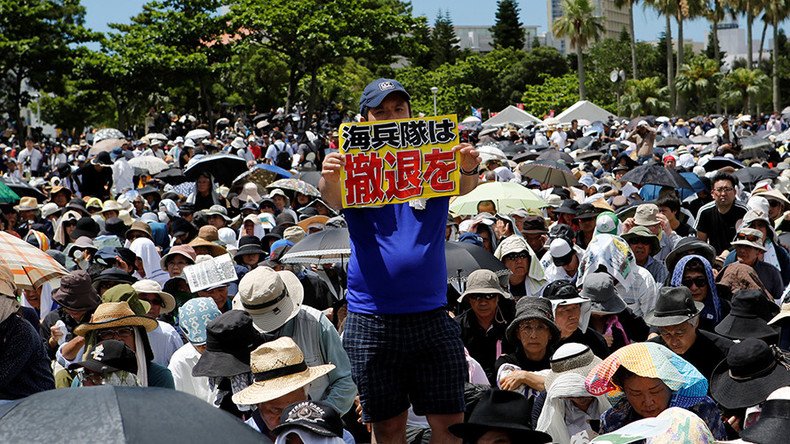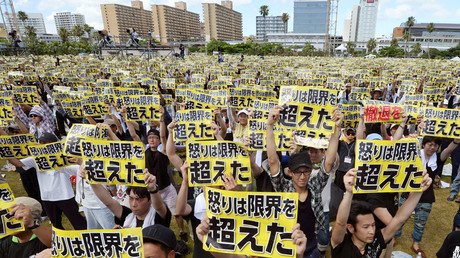Biggest since 1972: US military giving back 17% of occupied Okinawa land to Japanese

Citizens of Okinawa in Japan could be having their wishes fulfilled – at least 17 percent fulfilled, as that is the amount of land the United States military plans to transfer back to the island from its control, amid growing problems with its public image.
Several murders and a drunken joyride that made headlines have only added to the growing feeling of discontent amongst the locals about the US’ regional presence. The military bases have long been blamed for noise and air pollution, and many locals also see them as an uneasy legacy of post-WWII American occupation.
The handover is the biggest such move since 1972, when the formal occupation by US forces ended. It comes amid a rise in anti-American sentiment following a series of cases involving the US military, particularly the murder of a young Japanese woman by a civilian contractor.
The area that is being returned is 4,000 sq. hectares (or 40 sq. km) and is part of a jungle training camp, a statement read.
READ MORE: Tokyo to review ‘one-sided’ privileged status of Americans working at US bases in Japan
"We are respectful of the feelings of Okinawans that our footprint must be reduced,” Lt. Gen. Lawrence D. Nicholson, said according to Reuters.
His remarks come a month after Okinawans held one of their biggest demonstrations against the US presence in decades, with over 50,000 (65,000, by some accounts) showing up holding banners reading “anger over the limit,” following the murder of a young woman by an ex-Marine.
Whilst the Japanese public was observing a 30-day mourning period for the young Japanese woman who was murdered, an American servicewoman went on a drunken joyride, which further inflamed tensions.
The highly publicized cases led to varying degrees of control exercised over American troops – the latest being a blanket ban on all drinking on the island and for most servicemen and women to be confined to base.
Tokyo is also in the midst of reviewing the privileges enjoyed by Americans living on Okinawa, in line with a 1960 agreement. As things stand, Japanese prosecutors do not have the power to indict members of the US military or its “civilian component” if they are alleged to have committed a crime while they were on duty, giving US authorities carte-blanche to take jurisdiction over the case.
The so-called SOFA agreement is under review now.
READ MORE: US tested biological weapons in Japan’s Okinawa in the 60s – report
The handover of part of the territory back to the Japanese was agreed in 1996, but was not completed, as locals protested construction of a series of helipads – a precondition for the land to be transferred.
The military base is of strategic importance to the Americans and the Japanese, who depend on Washington’s 30,000 military personnel stationed on Okinawa to guard them from China, which they perceive as a military threat.
Around 50,000 US nationals live at the base, which occupy close to one-fifth of the total landmass of the island.













